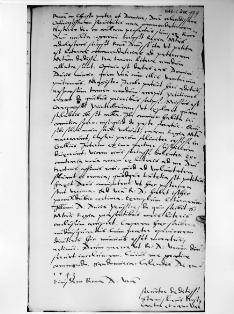Hesterno die in aulam profectus sum, ex ⌊reverendissimo domino⌋ multa cognovi. Scripsit regia ⌊maiestas adolescens⌋, scripsit ⌊reverendissimo domino⌋, se ita, ut petita est, litteras commendaticias ad ⌊paternam maiestatem⌋ dedisse. Hae tamen litterae nondum allatae sunt. Opinio est datas eas ⌊domini ducis⌋ nuntio, quem una cum illis venturum putamus.
⌊Magistro Iacobo⌋ patuit heri aditus, responsum tamen nondum accepit. Petitiones erant, de quibus prioribus scripsi. Missus est Oraczowski ⌊Piiotrckoviam⌋, ut exploret, quam salubris ibi sit aur written over l⌈lrr written over l⌉a. Ibi omnino habita iri ⌊comitia⌋ spero, nisi quid de peste feratur.
Qui sibi solis nova scribi volunt, coram ⌊regia maiestate⌋ narrarunt, ⌊caesari⌋ parum feliciter cessisse in ⌊Galliis⌋. Interim ex imo pectore suspirium duxerunt, vicem ⌊eius⌋ fortasse dolentes. Ego contraria nova accepi ex litteris ad me domini Hectoris affinis mei, quod ad voluntatem fluant ei omnia quodque ⌊Lutecia⌋ sit potitus. Faxit Deus omnipotens, ut haec posteriora sint veriora. Sed Vestra Reverendissima Dominatio habet istic procul dubio certiora. Exemplum litterarum illustrissimi domini ⌊ducis Prussiae⌋, de quo scribit s(erenissima) or s(acra)⌈s(erenissima)s(erenissima) or s(acra)⌉
⌊maiestas regia⌋, praesentibus meis litteris inclusum accipiet.
Coeperam haec scribere nudius quartus. Cum praeter opinionem diutius hic nuntius esset moratus, retinui.
Deum precor, ut Reverendissimam Dominationem Vestram diu servet incolumem. Cuius me gratiae commendo.


 BCz 1615, p. 122
BCz 1615, p. 122